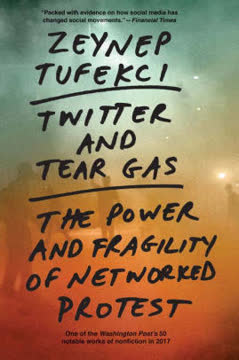Key Takeaways
1. Digital Connectivity Reshapes the Public Sphere
Digital connectivity reshapes how movements connect, organize, and evolve during their lifespan.
A new public space. Digital technologies have fundamentally altered the public sphere, creating a networked environment where individuals and groups can connect, discuss, and organize outside traditional gatekeepers like mass media. This shift is as profound as the changes brought by earlier technologies like writing or the printing press.
Finding like minds. The internet makes it easier for people with shared interests or grievances to find one another, overcoming geographical barriers and breaking down feelings of isolation. This "homophily" is crucial for the initial formation of social movements, allowing dissidents to build networks and discover they are not alone.
Beyond the screen. The networked public sphere is not just online; it's a complex interaction of online and offline spaces. Online connections facilitate offline meetings and protests, and offline events are documented and amplified online, creating a continuous feedback loop that transforms how movements operate.
2. Attention Is the New Currency, Censorship Evolves
Attention is oxygen for movements.
Competing for visibility. In the digital age, attention is a crucial, limited resource for social movements. Unlike the past where mass media held a near monopoly on public attention, now anyone can potentially broadcast, leading to an overwhelming "information glut."
Censorship by denial. Modern censorship is less about blocking information outright (which is difficult with digital tools) and more about denying attention, focus, and credibility. Governments and powerful actors use tactics like:
- Flooding the online space with misinformation and distractions.
- Aggressively challenging the credibility of dissenting voices.
- Creating confusion and doubt to paralyze people into inaction.
Circumvention and backfire. Attempts at traditional blocking can backfire, as seen with Egypt's internet shutdown or Turkey's Twitter bans, which often draw more attention (the Streisand Effect) and encourage the use of circumvention tools like VPNs. The challenge is no longer just getting information out, but ensuring it is seen and trusted amidst the noise.
3. Rapid Mobilization Bypasses Traditional Organizing Capacity
The internet similarly allows networked movements to grow dramatically and rapidly, but without prior building of formal or informal organizational and other collective capacities that could prepare them for the inevitable challenges they will face and give them the ability to respond to what comes next.
Adhocracy in action. Digital tools enable movements to mobilize large numbers of people quickly and organize tasks "on the fly" (adhocracy), bypassing the slow, tedious work of traditional organizing. Examples include:
- Using hashtags to call for protests instead of months of planning.
- Coordinating logistics like medical supplies via Google Docs and Twitter.
- Crowdfunding resources instead of relying on large donors.
Speed vs. resilience. While this speed is a powerful strength, it means movements often lack the "network internalities"—the collective decision-making skills, trust, and resilience built through sustained, challenging organizational work. They hit critical moments requiring agile tactical shifts without the necessary experience or structures.
Fragility in success. Movements that scale up rapidly using digital tools can be powerful in their initial phase but fragile when faced with inevitable challenges like internal disagreements, government countermeasures, or the need to transition to new tactics after a protest or occupation ends.
4. Leaderlessness Offers Resilience but Hinders Strategy
Although their ability (as well as their desire) to operate without defined leadership protects them from co-optation or “decapitation,” it also makes them unable to negotiate with adversaries or even inside the movement itself.
Horizontalism as a choice. Many networked movements embrace "leaderlessness" or "horizontalism" as a core political value, stemming from distrust of traditional institutions and a desire for direct participation. Digital tools facilitate this by enabling decentralized coordination.
Pros and cons. This lack of formal leadership makes movements resilient to authorities targeting or co-opting a few individuals. However, it creates significant challenges:
- Difficulty in collective decision-making and resolving internal conflicts.
- Inability to negotiate effectively with governments or other powerful actors.
- Tendency towards "tactical freeze," repeating initial successful tactics even when conditions change.
De facto leaders emerge. Despite the ideal of leaderlessness, individuals often gain prominence and become de facto spokespersons, often based on online visibility or tenacity. These individuals lack formal legitimacy, leading to internal conflict and making them targets for both internal criticism and external harassment.
5. Movement Culture Intertwines with Digital Affordances
The sense of rebellion that is felt at a protest and the work that people perform in protests are inseparable.
Beyond instrumental goals. Protests are not solely about achieving specific policy goals; they are also expressions of identity, community building, and a search for meaning. The "spirit of Gezi" or the "Republic of Tahrir" reflects this desire for belonging and collective effervescence.
Values in action. The participatory, anti-institutional, and community-oriented culture of many networked movements is reflected in their actions, such as setting up libraries, communal kitchens, and emphasizing cleanliness in protest camps. These acts are symbolic statements about desired values like non-commodified interaction and mutual aid.
Digital tools as cultural enablers. Digital technologies facilitate this culture by:
- Enabling rapid sharing of cultural products like memes and chants.
- Creating a sense of collective identity and belonging through shared online spaces.
- Allowing individuals to express themselves and connect with others who share their values, even across vast distances.
6. Platforms and Algorithms Become Powerful Gatekeepers
Communicating primarily in this networked public but privately owned sphere is a bit like moving political gatherings to shopping malls from public squares or sending letters via commercial couriers rather than the U.S. Postal Service; neither shopping malls nor Facebook nor any other private company guarantees freedom of speech or privacy.
Centralized power. Despite the decentralized nature of the internet, a few large commercial platforms (Facebook, Google, Twitter) have become dominant hubs for online activity due to network effects and ad-based business models. These platforms act as new, powerful gatekeepers to the public sphere.
Policies and algorithms. These platforms control visibility and access through:
- Terms-of-service policies (e.g., real names, content rules) that can disproportionately affect activists.
- Algorithmic filtering (e.g., Facebook's News Feed, Google Search ranking) that determines what content is seen and prioritized.
- Business models (ads) that incentivize engagement and advertiser-friendly content, potentially burying political or controversial topics.
Opaque influence. The power of these platforms is often opaque and personalized. Users may not know their feed is algorithmically controlled, and the criteria for visibility or censorship are proprietary and constantly changing, making it difficult for movements to understand or counter their influence.
7. Online Identity and Reputation Shape Interaction
Online platforms are not governed only by the rules set by the companies that own the spaces; they also have cultures and norms created by the platform’s users and evolved through their actions.
Pseudonymity vs. real names. Platforms differ in how they handle user identity (real name, pseudonymity, anonymity) and whether online interactions build a persistent reputation (karma, followers). These design choices have significant consequences for community formation and social dynamics.
Community norms emerge. Even in pseudonymous spaces, communities develop internal norms and hierarchies, as seen in the Reddit "Jailbait" example, where users built reputation ("karma") for behavior deemed abhorrent by mainstream society. This shows that online communities are not exempt from social dynamics.
Risks and opportunities. Pseudonymity can offer protection for dissidents and allow for open discussion of taboo topics (like on YouBeMom or early IRC). However, it also enables large-scale harassment campaigns and makes it easier for opponents or state actors to spread disinformation or impersonate activists.
8. Governments Adapt with New Control Tactics
Rather than attempt to break the first link, information dissemination, censorship through information glut focuses on the second link, weakening the agency that might be generated by information.
Beyond blocking. Governments have learned from early failures (like Egypt's internet shutdown) and developed more sophisticated methods of control in the digital age. These include:
- Censorship by information glut: Drowning out dissenting voices with noise, misinformation, and distractions.
- Demonizing the medium: Portraying platforms like Twitter as threats to national values or security.
- Targeted harassment: Using "troll armies" or organized campaigns to silence activists through abuse and threats.
Exploiting platform weaknesses. Governments leverage platforms' reliance on "community policing" and their business models to target dissidents through mass reporting or by spreading disinformation that goes viral in echo chambers.
Surveillance evolves. While political surveillance is a constant, digital tools enable new forms, including tracking personal lives (kompromat) to intimidate activists, highlighting that surveillance threats extend beyond monitoring political communication.
9. Movement Power Lies in Signaling Capacity
Evaluating movement capacity as multidimensional helps explain why a movement like Occupy can be both so large and successful in some dimensions and so fragile in others.
Beyond headcounts. The power of social movements is not solely in their size or energy, but in their underlying capacities and how they signal these to those in power. Key capacities include:
- Narrative capacity: Ability to frame issues and control the story.
- Disruptive capacity: Ability to interrupt business as usual.
- Electoral/Institutional capacity: Ability to influence elections or institutional behavior.
Signals and interpretation. Movements signal these capacities through actions (protests, online campaigns), and those in power interpret these signals to assess the threat. Costly signals (requiring significant effort or risk) are often more credible than cheap talk.
Digital tech's uneven impact. Digital tools can greatly enhance narrative capacity (e.g., Black Lives Matter, Occupy) but may not automatically build disruptive or electoral/institutional capacity, especially if they bypass traditional organizing that develops these skills. This can lead to movements strong in some areas but fragile in others.
10. The Digital Transformation Is a Complex, Unfolding Story
Barely a decade into a global upheaval in technology, communication, and connectivity, the new state of affairs already appears deceptively familiar.
Dialectical change. Like the printing press era, the digital transformation is a complex, dialectical process. Technologies empower both challengers and the powerful, often in unexpected ways, and introduce new dynamics that are still unfolding.
No simple answers. There are no easy, universal solutions to the challenges posed by the networked public sphere. Issues like censorship, harassment, and the power of platforms involve complex trade-offs and require ongoing adaptation from both movements and societies.
Learning and adapting. Movements and governments are continuously learning and adapting their strategies in this new landscape. Some movements are exploring new organizational tools (Loomio) or engaging with electoral politics in new ways (Podemos, Black Lives Matter), while governments refine their control tactics. The story is far from over.
Last updated:
FAQ
What is Twitter and Tear Gas by Zeynep Tufekci about?
- Exploration of networked protests: The book investigates how digital technologies, especially social media, have transformed the organization, culture, and impact of social movements in the 21st century.
- Power and fragility focus: Tufekci analyzes both the empowering aspects and the vulnerabilities of these networked protests, using case studies from around the world.
- Interplay of technology and society: The book emphasizes that technology interacts with political, cultural, and organizational factors, rather than determining outcomes on its own.
- Empirical and theoretical approach: Drawing on fieldwork, interviews, and big data, Tufekci provides conceptual frameworks to understand how modern movements form, organize, and face repression.
Why should I read Twitter and Tear Gas by Zeynep Tufekci?
- Nuanced insider perspective: Tufekci combines her expertise as a social scientist, technologist, and participant-observer, offering grounded insights into real-world activism.
- Understanding modern protest dynamics: The book clarifies why networked protests can mobilize rapidly but often struggle with long-term organization and adaptability.
- Broader implications for society: It sheds light on how governments counter digital dissent and how platform design and algorithms affect social movements, making it essential for activists, scholars, and anyone interested in digital politics.
- Critical perspective on technology: The book challenges both utopian and dystopian views, emphasizing the complex relationship between digital tools, social movements, and power structures.
What are the key takeaways from Twitter and Tear Gas by Zeynep Tufekci?
- Networked protests are powerful but fragile: Digital tools enable rapid mobilization and visibility but often result in movements lacking deep organizational capacity.
- Technology is not deterministic: Outcomes depend on the interaction between digital affordances and social, political, and cultural contexts.
- Government countermeasures are evolving: States use sophisticated tactics like misinformation, surveillance, and algorithmic manipulation rather than just censorship.
- New frameworks are needed: Understanding modern movements requires new conceptual models that account for their unique strengths and vulnerabilities in the digital era.
What are the main concepts introduced in Twitter and Tear Gas by Zeynep Tufekci?
- Networked public sphere: A digitally reconfigured space where online and offline interactions enable new forms of collective action and visibility.
- Capacities and signals: Movements have underlying capacities (organizational strength, decision-making) and send signals (protests, marches) that communicate power; digital tech alters this relationship.
- Tactical freeze and adhocracy: Leaderless, decentralized organizing can lead to difficulties in adapting tactics and making decisions, often resulting in stagnation.
- Horizontalism and participation: Many movements value inclusivity and leaderlessness, but this can create challenges in coordination and resilience.
How does Zeynep Tufekci define and explain the "networked public sphere" in Twitter and Tear Gas?
- Digitally reconfigured public space: The networked public sphere is where digital and physical interactions blend, allowing new forms of collective action beyond traditional media.
- Bypassing traditional gatekeepers: Social media enables activists to reach large audiences directly, challenging the monopoly of mass media.
- New challenges and choke points: While dispersing attention, digital platforms also introduce new forms of control through algorithms and platform policies.
- Role in protest visibility: The networked public sphere amplifies protest messages but also exposes movements to misinformation and manipulation.
What is the "capacities and signals" framework in Twitter and Tear Gas by Zeynep Tufekci?
- Capacity defined: Refers to a movement’s underlying ability to effect change, including narrative, disruptive, and electoral/institutional capacities.
- Signals as communication: Protests and digital actions serve as signals to both supporters and authorities, indicating the movement’s strength and intentions.
- Digital amplification and fragility: Digital tools can quickly amplify signals but may bypass the slow building of organizational capacity, making movements more vulnerable.
- Interpretation shapes outcomes: The perceived capacity signaled to elites and the public influences political responses and movement success.
How does Twitter and Tear Gas by Zeynep Tufekci compare traditional and networked protest organizing?
- Traditional organizing builds depth: Historical movements like the U.S. civil rights movement invested years in building formal organizations and decision-making structures.
- Networked protests scale quickly: Modern movements can mobilize large crowds rapidly via digital tools but often lack organizational depth and collective experience.
- Consequences for adaptability: The difference in organizing affects a movement’s ability to adapt tactics, negotiate, and survive repression, with networked protests often facing fragility despite initial power.
- Tactical freeze risk: Leaderless, digitally-coordinated movements may struggle to shift strategies after initial successes.
What does Twitter and Tear Gas by Zeynep Tufekci say about leadership and leaderlessness in networked protests?
- Leaderlessness as a choice: Many movements embrace horizontalism and reject formal leadership to avoid co-optation and repression, reflecting deep political and cultural values.
- Emergence of informal leaders: Despite claims of leaderlessness, de facto leaders often arise due to social media dynamics and attention economies, but they lack formal legitimacy.
- Challenges in decision-making: The absence of recognized leadership complicates negotiation, tactical shifts, and internal conflict resolution, often leading to tactical freeze.
- Balance of participation and coordination: Movements struggle to maintain inclusivity while achieving effective organization and resilience.
How does Twitter and Tear Gas by Zeynep Tufekci analyze the role of digital platforms and algorithms in protest movements?
- Platforms as public squares: Social media platforms like Facebook, Twitter, and YouTube are central to organizing, communication, and narrative control.
- Algorithmic gatekeeping: Algorithms shape what content is visible, often amplifying sensational or divisive material, which can both help and hinder movements.
- Content governance and censorship: Platform policies can censor or restrict protest-related material, sometimes under government pressure, affecting movement capacities.
- Economic incentives: The ad-based business model of platforms influences what content is promoted, often prioritizing engagement over accuracy or social good.
What are the main government countermeasures to networked protests described in Twitter and Tear Gas by Zeynep Tufekci?
- Evolved censorship tactics: Governments have shifted from outright internet shutdowns to more sophisticated methods like information glut, distraction, and delegitimization.
- Surveillance and repression: Digital tools have increased governments’ ability to surveil and target activists, both politically and personally.
- Disinformation campaigns: State actors use misinformation and troll armies to confuse, overwhelm, and polarize public discourse, undermining protest credibility.
- Strategic demonization: Some regimes demonize platforms themselves to discourage use among supporters, rather than attempting total censorship.
How does Twitter and Tear Gas by Zeynep Tufekci address the challenges of misinformation, credibility, and attention in the digital age?
- Information glut problem: The abundance of information online makes it difficult for individuals to verify facts, leading to confusion and mistrust.
- Deliberate sowing of doubt: Governments and other actors use hoaxes, false claims, and credibility denials to undermine protest narratives and foster resignation.
- Streisand Effect: Attempts to suppress information often backfire, drawing more attention to the censored content.
- Need for new verification tools: Activists face increasing challenges in authenticating content and metadata, a critical area often overlooked by technology developers.
What are the best quotes from Twitter and Tear Gas by Zeynep Tufekci and what do they mean?
- "The power of networked protests is real, but so is their fragility." This quote encapsulates the book’s central thesis that digital tools empower movements but also introduce new vulnerabilities.
- "Censorship in the digital age is not just about blocking information, but about denying attention." Tufekci highlights how modern censorship operates through distraction, misinformation, and algorithmic suppression.
- "Movements must keep walking and asking questions." The book concludes with a call for ongoing adaptation and critical reflection, acknowledging the uncertain and evolving nature of digital-era activism.
- "Digital tools are aids, not substitutes, for the hard work of building collective resilience." This underscores the importance of organizational capacity and strategic planning beyond rapid online mobilization.
Review Summary
Twitter and Tear Gas explores the impact of social media on modern protest movements. Tufekci analyzes how digital technologies have reshaped activism, examining case studies from the Arab Spring to Occupy Wall Street. She discusses the strengths and weaknesses of networked protests, including their ability to quickly mobilize large crowds but struggle with long-term organization. The book offers insights into government responses, censorship tactics, and the changing nature of public discourse in the digital age. Readers praise Tufekci's balanced approach and firsthand experiences, though some find the academic tone challenging.
Similar Books




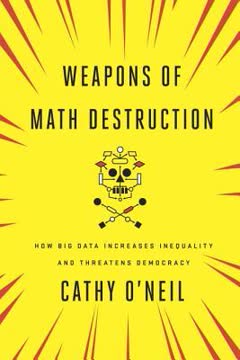

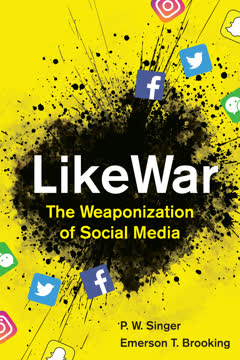
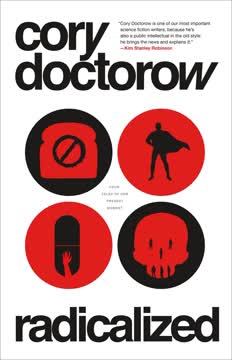

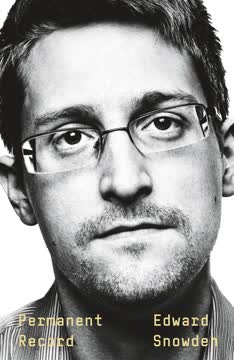
Download PDF
Download EPUB
.epub digital book format is ideal for reading ebooks on phones, tablets, and e-readers.
